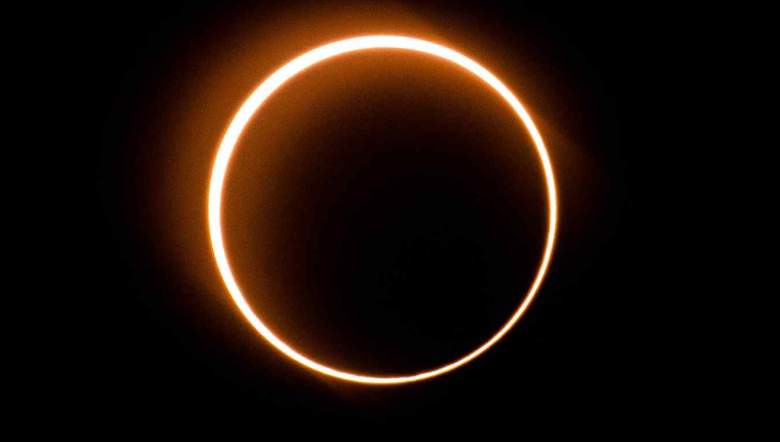
Early on Thursday, June 10, a rare annular solar eclipse is taking place. The moon is passing over the sun, creating a partial eclipse that looks like a “ring of fire” around the moon. Because the moon appears smaller in the sky, it won’t completely block out the sun. Instead, you’ll enjoy what appears to be a “ring of fire” around the sun instead. If you’re in a location where you can’t see the eclipse or if the weather isn’t cooperating, then you can watch online via the live streams below.
How to Watch the Eclipse Online
You can watch the ring of fire eclipse in a variety of live streams, including the selection listed below.
Weather permitting, NASA will be streaming a live feed of the eclipse, which you can watch in the embedded video below or at this link if the video doesn’t work correctly on your browser.
NASA wrote on YouTube about the video: “Weather permitting, NASA will carry a feed of the annular solar eclipse on June 10, 2021 over northern Canada and the Arctic. The stream will start at 5 a.m. EDT (09:00 UTC, but will be dark until sunrise at 5:47 a.m. EDT (09:47 UTC). Note: The telescope being streamed will be too far south to see the full annular effect.”
Virtual Telescope is hosting a live stream for the annular solar eclipse. If the video doesn’t appear on your browser below, you can watch it here.
Virtual Telescope noted on YouTube:
Next 10 June 2021, the Sun will offer an amazing annular eclipse, mainly visible from Canada, Greenland and Russia. As in the past, the Virtual Telescope Project will partner with some generous astro-imagers there to bring to you the stunning beauty of such a unique event. We are putting together an international team, thanks to very generous people willing to share their views with the world… The live feed covering the annular solar eclipse will start on 10 June 2021, starting at 09:00 UTC.
The next live stream is from TimeandDate.com. If you can’t see the embedded video below on your browser, you can watch it here.
Times for the Solar Eclipse
The eclipse will occur at 6:53 a.m. Eastern, CBS News reported. In other time zones, this is 5:53 a.m. Central, 4:53 a.m. Mountain, and 3:53 a.m. Pacific. Of course, it won’t be visible everywhere, depending on weather and your location. NASA noted that to see the exact time that the eclipse may be visible in your area, you can click on the map here.
You can also use Time and Date’s website here to determine the exact time you’ll be able to see the eclipse in your location. If you scroll to the bottom of the page, you’ll see the time that the partial eclipse, maximum eclipse, and last view of the eclipse will be visible in your region. (This will work as long as you are not using a VPN to obscure your location.)
Even though this is a partial eclipse, you will still need eye protection if you’re watching in person, rather than online, so you don’t get eye damage.